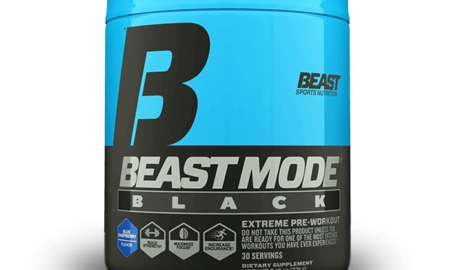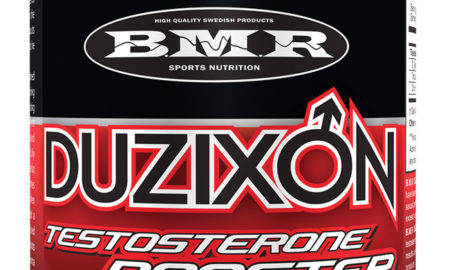 Dehydroepiandrosterone continues to be a source of intense controversy. It’s a steroid produced in the adrenal glands and is by far the most abundant steroid circulating in the blood. It comes in two forms: DHEA, which is the free, or unbound, version, and DHEA-S, which is attached to a sulfur molecule. DHEA has a short half-life of one to three hours, meaning that half of an oral dose is broken down in that time.
Dehydroepiandrosterone continues to be a source of intense controversy. It’s a steroid produced in the adrenal glands and is by far the most abundant steroid circulating in the blood. It comes in two forms: DHEA, which is the free, or unbound, version, and DHEA-S, which is attached to a sulfur molecule. DHEA has a short half-life of one to three hours, meaning that half of an oral dose is broken down in that time.
DHEA-S is the primary circulating form, lasting for 10 to 20 hours in the body. While other steroids, such as testosterone and estrogen, are bound to sex-hormone-binding globulin in the blood and are not active until they’re unbound, DHEA-S is loosely bound to albumin, another plasma protein. DHEA-S circulates at a concentration that’s 100 to 500 times higher than testosterone and 1,000 to 10,000 times greater than estrogen. That’s why it’s often referred to as the mother of all hormones.
Despite its abundance in the blood, scientists still aren’t sure exactly what DHEA does. Most suggest that it acts as a reservoir for the synthesis of other steroid hormones, including estrogen and testosterone, and that most of the beneficial effects ascribed to it come from that property. Having low DHEA has been linked to several aspects of the aging process, including insulin resistance, obesity, cardiovascular disease, cancer, depression and blunted immune response—all of which increase with age. In animals DHEA shows definite antiaging effects, which has led to its being labeled a fountain-of-youth hormone. Still, rodents and other animals have either no or low DHEA, and the doses given in animal or test-tube studies are much higher than normal.
One reason DHEA is linked to age-related maladies is that it declines in most people. You have a lot in your body at birth, but it rapidly declines. It increases again at about age 10, peaking at about age 30. After that it depletes at a rate of about 10 percent per decade until age 80, when its level plateaus. Many older people show DHEA-S—the type measured in the blood—at a rate only about 20 to 25 percent of the youthful peak. Some studies correlate limited DHEA with aging infirmities; the less you have, the less zest and vigor you have. People in nursing homes who have very little require the most assistance. Although the data for humans are equivocal, studies done with other primates, such as monkeys, show that having more DHEA is associated with longevity. Humans experiencing age-related loss of muscle and bone have low DHEA. Indeed, one theory suggests that it helps to maintain higher levels of insulinlike growth factor 1, a hormone that protects the integrity of numerous organs and tissues in the body, including the heart, brain and muscles.
[Are you looking for health, muscle and the amazing anti-aging benefits of resistance training? Get the new e-book by Steve and Becky Holman, Old School, New Body. Read the Iron Man magazine review here.]
DHEA was the first pro-hormone put on the market after the food supplement act of 1994 was passed, and bodybuilders snapped it up. It had previously sold as a supplement derived from a plant sterol found in Mexican yams, but the United States Food and Drug Administration removed that form from the market in 1986, owing to quality-control issues. Some alleged DHEA supplements didn’t contain any DHEA.
DHEA didn’t appear to build muscle, although it may have benefited older men and women. One study reported that giving 50 milligrams a day, the suggested replacement dosage, to older men and women over 16 weeks enhanced muscle and strength adaptations during a weight-training program.1 In a more recent study, however, a daily dose of 50 milligrams given to 31 older women for 12 weeks was found to have no advantages over a placebo.2 The women did endurance exercise four times a week and lifted weights three days a week during the course of the study. Their DHEA-S count rose by 650 percent over baseline, as did other steroid hormones, such as testosterone (100 percent), estradiol (165 percent) and estrone (85 percent). IGF-1 rose by 30 percent in the women who took DHEA.
A 1999 study involved giving 100 milligrams a day of DHEA or a placebo to 40 middle-aged men, average age 48, who had all actively engaged in weight training for at least one year. After 12 weeks the researchers found no changes in body composition, lean mass, strength or testosterone in the DHEA group. The good news was the absence of side effects.
Other studies examined the impact of oral doses of DHEA on young men engaged in weight training. In one it wound up as a metabolite of dihydrotestosterone, a.k.a. DHT, itself a metabolite of testosterone that is linked to male-pattern baldness, acne and prostate enlargement. None of the young men experienced any of those problems, but neither did they show increased testosterone or added muscle or strength.
In women DHEA always increases testosterone measures. It converts first to androstenedione—the first pro-hormone to follow DHEA into the marketplace—then directly into testosterone. That’s thought to occur because women produce much smaller amounts of testosterone than men. In older men DHEA can take various pathways. In those who are low in testosterone, it may convert to testosterone. In others it converts to estrogen—kind of a metabolic crapshoot.
A study published in 2006 found that men 65 or over who took DHEA experienced significant increases in testosterone, along with cyclic GMP, a substance that’s also boosted by the drug Viagra. Along with those changes, the men had less low-density lipoprotein—the bad kind of cholesterol. Another study published the same year found no connection between DHEA and cardiovascular death in men, while more recent research found a slightly increased risk of cardiovascular disease in older women who take it, likely because it lowers high-density lipoprotein—the good kind of cholesterol—in older women.
Various maladies related to brain function tend to increase with age, including depression and degenerative diseases like Alzheimer’s and Parkinson’s. DHEA is generated in the brain, where it acts as a neurosteroid, meaning that it influences brain function. Indeed, the brain secretes an abundance of DHEA, and nature never does anything wantonly—so there must be a reason. DHEA works against GABA, which inhibits the body from producing such beneficial substances as growth hormone, while it increases the activity of another neurotransmitter called serotonin. The effect is to reduce depression. In addition, DHEA increases beta-endorphin, the brain’s natural feel-good substance. Some researchers believe that could explain why older people who take DHEA report a more positive attitude.
Animal studies show that DHEA appears to lessen the loss of cognition related to a buildup of a brain protein called beta-amyloid, which is considered a major cause of Alzheimer’s disease. Another cause of Alzheimer’s is an increase of free-radical activity, to which the brain is prone because of its high polyunsaturated fat content. DHEA acts as an antioxidant in the brain, particularly in the hippocampus, the area of the brain associated with memory and learning. Long-term flooding of the brain with the stress hormone cortisol selectively destroys brain cells that are linked to memory and learning, but DHEA blocks cortisol’s impact.
Research on older adults shows that those who have enough DHEA are less likely to suffer from depression; people who are depressed most of the time have a higher mortality rate. Other studies show that DHEA may support restful and restorative sleep, and many older people are sleep-deprived, which has a direct bearing on hormone release. Sleep deprivation leads to a precipitous drop in anabolic hormones—including growth hormone, IGF-1 and testosterone—and to enhanced cortisol production. That’s not only bad for brain function but is also related to the frailty and muscle loss so common in older people. A recent study using rats as subjects found that giving them 30 milligrams of DHEA per kilogram of bodyweight for a month led to beneficial changes in their brains, including lowering the activity of monoamine oxidase, an enzyme that degrades catecholamines in the brain that block depression, such as dopamine, epinephrine and norepinephrine. DHEA also lowered the accumulation of lipofuscin, a waste material that interferes with brain function.
Not all studies, however, find that DHEA benefits cognitive function and quality of life. A 2006 study published in the New England Journal of Medicine featured older men and women who took DHEA for two years. The scientists found no beneficial effects on body composition, physical performance, insulin sensitivity or quality of life. In a recent study 110 men and 115 women got either 50 milligrams of DHEA or a placebo for one year.6 The subjects, none of whom were selected on the basis of their baseline DHEA, underwent a variety of cognitive tests throughout the course of the study. Although the supplement did restore youthful amounts of DHEA to the subjects, none showed any benefits in either cognition or feelings of well-being. Consistent with previous studies, the women experienced a greater hormone impact. Their testosterone rose by 60 percent and estradiol, an estrogen, rose by 40 percent. The men showed no hormone changes.
In contrast, a British study of younger men found that a dose of 150 milligrams of DHEA twice daily resulted in improved episodic memory and subjective mood, along with a drop in evening cortisol counts.
Another problem often linked to aging is lowered insulin sensitivity. That often leads to diabetes, the fourth greatest cause of death. In rats, DHEA lowers insulin and increases insulin sensitivity, but as rats don’t produce DHEA, extrapolating the effect to humans is a stretch. Results in human studies vary, with some subjects who have blunted adrenal gland function showing more effects on insulin when they take DHEA. Longevity is closely linked to insulin; healthy older people always have low resting insulin and higher insulin sensitivity. Having more insulin means more bodyfat gain and buildup of several fat-synthesizing enzymes. In ongoing studies of monkeys on calorie-restricted diets, lower insulin, less diabetes, less bodyfat and more DHEA were consistent results. While having too much insulin points toward atherosclerosis and heart disease, DHEA opposes those effects. In animals DHEA prevents the buildup of plaque in arteries after a high-fat diet and prevents the internal clot formation that is the immediate cause of most heart attacks and strokes.
DHEA may help prevent bodyfat increase. It always has that effect in animals—quite potently. While a study of young men showed that a daily dose of 1,600 milligrams of DHEA significantly lessened bodyfat, follow-up studies failed to confirm the finding. Cell studies show that DHEA prevents development of new fat cells. Other studies show that it inhibits an enzyme required for cells to convert sugar into fat. A 2004 study of older men and women published in the Journal of the American Medical Association found that DHEA depleted deep-lying abdominal fat and improved insulin sensitivity.
When you read that an older person died of “old age,” it usually means that the person didn’t die from the usual causes of death, such as heart disease or cancer. What then was the cause? Often it’s related to a loss of immune response. Diseases rarely fatal in the young, such as pneumonia, often prove fatal to older people, who lack the immune defense against them. Cortisol, which suppresses immunities, increases with age, while DHEA levels decline. That may explain why the immune system fades, setting you up for diseases like cancer. It’s the major reason that cancer is so prevalent in the aged. DHEA may help maintain the immune system. One way it does that is by blocking the impact of cortisol.
A recent review pointed out that exercise helps control cortisol, thereby maintaining immunity. Exercise—but not overtraining—tips the metabolic scales in favor of DHEA over cortisol. Both aerobics and weight training may help too.7 Calorie restriction, which extends life in many species but remains a speculative issue in humans, increases DHEA. Alcohol intake lowers it, as do caffeine and high-stress conditions.
A study published in the June 2008 issue of the Journal of the American Geriatrics Society measured serum DHEA in 940 men and women, aged 21 to 88, and monitored them from 1978 to 2005. The researchers found that having less DHEA-S was significantly associated with shorter life span, and higher DHEA-S counts were a strong predictor of longevity in men even after adjusting for age, blood pressure and plasma glucose. They found no relationship between DHEA and longevity in women, however. Interestingly, they found no significant difference in longevity until after 15 years of follow-up, which they suggest could explain the negative findings concerning DHEA and male longevity in previous studies.
Side effects vary with sex. DHEA should be avoided by men who have prostate disease. In younger men it may convert into a metabolite of DHT, which may or may not lead to male-pattern baldness, acne and prostate problems. The most common side effect in women is acne; DHEA is the major cause of teenage acne too. Some people experience a minor elevation in liver enzymes when using DHEA, but it’s temporary and not considered a major problem. Others report an increase in body hair, likely the result of the androgenic effects of DHEA in women. When such effects do occur, they nearly always happen with doses of more than 100 milligrams daily. The usual replacement dose is 50 milligrams. The use of the word replacement is a bit of a stretch, as there’s no evidence that DHEA is essential to life.
A movement is under way in Congress to have DHEA added to the list of banned anabolic steroids. That’s because it can be a precursor of testosterone, though there’s no evidence that DHEA has any significant anabolic effects. For that reason DHEA remains the sole survivor of the FDA pro-hormone purge of 2005 and is still an ingredient in several “anabolic” supplements. The evidence, however, demonstrates that DHEA, when taken in daily doses of 50 milligrams or less, is benign and may provide some benefits related to the aging process and disease prevention. The best way to determine if DHEA would be helpful for you is to have a blood test for DHEA-S. About 15 percent of those over 40 have normal DHEA counts, and for them supplementing it would do little or nothing. For the other 85 percent, however, supplemental use of DHEA remains a matter of intense scientific debate, stemming from the fact that most of the research showing its benefits involved animals that produce little or no DHEA and test-tube studies. On the other hand, a body of human research shows that those who are low in DHEA can derive quality-of-life benefits from the still enigmatic substance.
References
1 Villareal, D.T., et al. (2006). DHEA enhances the effects of weight training on muscle mass and strength in elderly men and women. Am J Physiol Endocrinol Metab. 291:E1003-E1008.
2 Igwebuike, A., et al. (2008). Lack of DHEA effect on a combined endurance and resistance exercise program in postmenopausal women. J Clin Endocrin Metab. 93:534-538.
3 Wallace, M.B., et al. (1999). Effects of dehydroepiandrosterone vs androstenedione supplementation in men. Med Sci Sports Exerc. 31:188-1792.
4 Bastianetto, S., et al. (1999). Dehydroepiandrosterone (DHEA) protects hippocampal cells from oxidative stress-induced damage. Brain Res Mole Brain Res. 66:35-41.
5 Kumar, P., et al. (2008). Effect of dehydroepiandro-sterone (DHEA) on monoamine oxidase activity, lipid peroxidation, and lipofuscin accumulation in aging rat brain regions. Biogerontol. 9(4):235-246.
6 Kritz-Silverstein, D., et al. (2008). Effects of dehydroepiandrosterone supplementation on cognitive function and quality of life: The DHEA and Well-Ness (DAWN) trial. J Am Geriatric Soc. 56:1292-1298.
7 Buford, T.W., et al. (2008). Impact of DHEA-S and cortisol on immune function in aging: a brief review. Appl Physiol Nutr Metab. 33:429-33. IM




















You must be logged in to post a comment Login